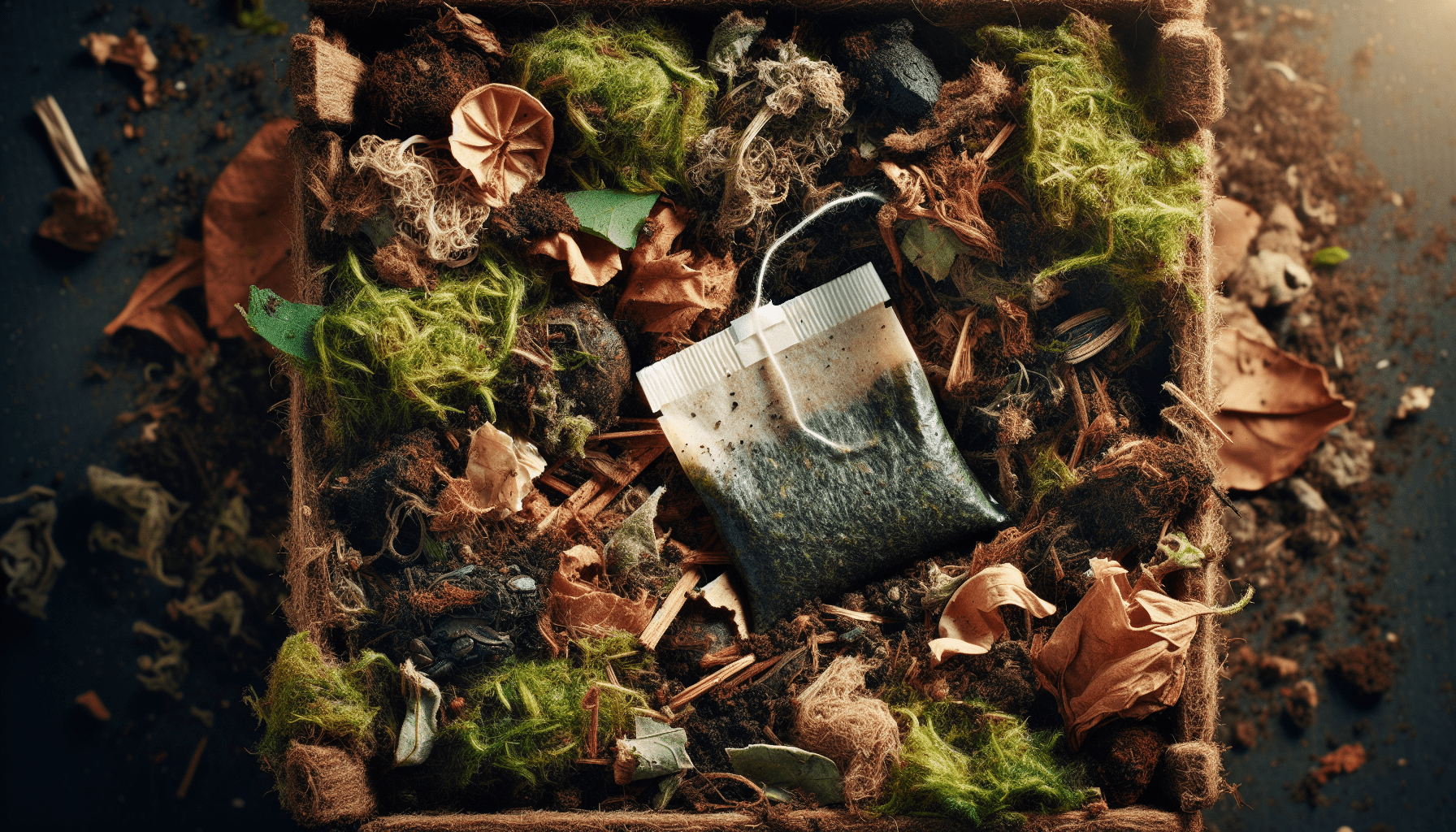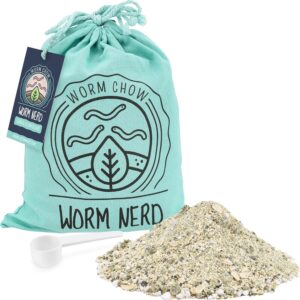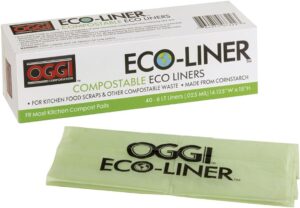Hey everyone! In our article, “Can I Compost Tea Bags?” we dive into a question that many eco-conscious tea lovers have pondered. Composting is a fantastic way to recycle kitchen waste, but not all tea bags are created equal. In our exploration, we’ll uncover which tea bags are compost-friendly, what materials to look out for, and how to make the most of your composting efforts. Join us as we sip on this fascinating subject and discover how to make our tea habit as green as it can be. Can I Compost Tea Bags?
Have you ever found yourself sipping a warm cup of tea and wondered, “Can I compost tea bags?” If so, you’re not alone. Many of us tea enthusiasts are equally committed to reducing our waste and improving our composting practices. Let’s delve into the nitty-gritty of composting tea bags and discover the environmental impacts and benefits together.
Understanding Tea Bags
First things first, let’s get to know our tea bags a bit better. This is crucial because not all tea bags are created equal, and knowing the differences can make a huge impact on whether or not they should land in our compost bins.
Types of Tea Bags
Tea bags can vary significantly based on material, brand, and manufacturing process. Here’s a rundown of the common types of tea bags:
| Type of Tea Bag | Material | Compostability |
|---|---|---|
| Traditional Paper | Unbleached or bleached paper | Compostable, provided no plastic lining |
| Silken or “Mesh” | Polyethylene terephthalate (PET) or polypropylene (PP) | Not compostable due to plastic content |
| Biodegradable Plant-Based | Cornstarch or PLA cellulose fibers | Compostable, but read the label for specifics |
| Staple-Free | Paper or biodegradable materials | Compostable, ensure staple-free to avoid metal pollutants |
| Pyramid Bags | PET or plant-based alternatives | Depends; always check if plant-based |
As we can see from the table, not all tea bags are fit for composting. Some contain plastic or staples that could interfere with the composting process and potentially harm our soil.
Components of Tea Bags
Let’s break down what makes up a tea bag:
- Tea Leaves: These are undoubtedly compostable.
- Bag Material: We’ve identified which materials are compost-friendly.
- Staples/Strings: Staples are usually made of metal and should be removed before composting. Strings, if made of cotton or biodegradable materials, can be composted.
- Tags: Often attached to the string, tags usually aren’t compostable due to inks and coatings.
Understanding these components helps us make informed choices when composting our tea bags or looking for sustainable tea bag options.
Benefits of Composting Tea Bags
Before we delve deeper into how to compost tea bags, let’s discuss why it’s worth our effort. Composting tea bags can offer several environmental and practical benefits.
Soil Enrichment
Composting tea bags enriches our soil. The organic material from tea leaves adds valuable nutrients to compost, enhancing our garden soil’s fertility. So, by composting tea bags, we’re directly benefiting our plants.
Waste Reduction
Each tea bag we compost is one less item heading to a landfill. Waste reduction is crucial in our fight against global environmental issues. By composting tea bags, we are playing a small but significant role in reducing our overall waste footprint.
Sustainable Gardening
Composting supports sustainable gardening practices. When we use composted material, we reduce the need for chemical fertilizers, promoting a healthier ecosystem right in our backyards.
How to Compost Tea Bags
Now that we understand the benefits and have identified the compostable parts of tea bags, let’s explore the practical steps involved in composting them.
Step 1: Identify Compostable Materials
First, we must determine if our tea bags are compostable. If they’re made from natural, biodegradable materials without any plastic linings or staples, we’re good to go. It’s also helpful to check the packaging for any compost-friendly labels.
Step 2: Remove Non-Compostable Components
Next, we should remove any staples, plastic strings, or tags. This ensures that only the compostable parts of the tea bag enter the compost bin, avoiding contamination.
Step 3: Add to Compost Bin
We can add our compostable tea bags directly into our compost bin or heap. It’s beneficial to tear the tea bag slightly, allowing the tea leaves to mix well with other compost materials and decompose faster.
Step 4: Balance the Compost
For optimal composting, we should maintain a good balance of greens (nitrogen-rich materials) and browns (carbon-rich materials). Tea bags serve as green materials, so it’s great to mix them with some browns like dried leaves, paper, or wood chips.
Step 5: Monitor and Maintain
Regularly turning the compost heap and checking the moisture levels ensures that everything decomposes evenly. Within a few months, our compost should be ready to enrich our garden soil.
Common Issues and Solutions
Even with the best intentions, we might face some hurdles when composting tea bags. Let’s address some common issues and their solutions.
Presence of Mold
We might occasionally spot mold on composting tea bags. While mold is a natural part of decomposition, excessive mold can be a problem.
- Solution: Ensure adequate aeration by turning the compost heap regularly. Also, balance the moisture levels; too much moisture fosters mold growth.
Discovery of Plastic
Sometimes, despite our precautions, we might find plastic in our compost from tea bags with hidden plastic linings.
- Solution: Double-check the type of tea bags we purchase. Opt for brands that clearly label their tea bags as plastic-free and compostable.
Long Decomposition Time
If our tea bags take too long to decompose, this could slow down the entire composting process.
- Solution: Tearing or cutting the tea bags before composting helps them break down faster. Additionally, maintaining the right balance of greens and browns and regularly turning the compost heap can speed up decomposition.
Tea Bags: A Global Perspective
Let’s broaden our perspective and explore how the tea industry is approaching environmental sustainability, including compostable packaging.
Innovations in Sustainable Tea Bags
Many tea companies worldwide are striving to reduce their environmental impact by innovating in sustainable packaging.
- Biodegradable Materials: Some companies are transitioning to 100% biodegradable tea bags made from corn starch or other plant-based fibers.
- Plastic-Free Alternatives: Several brands are eliminating plastic altogether, opting for safer, more sustainable options.
Certifications and Eco-Labels
When shopping for tea, it’s helpful to look for brands with certifications and eco-labels that attest to their commitment to sustainability.
- Organic Certification: Indicates that the tea is grown without harmful pesticides and chemicals.
- Fair Trade: Ensures ethical treatment of workers and sustainable farming practices.
- Compostable Certification: Assures that tea bags are safe for composting.
Here’s a table summarizing these certifications:
| Certification/Eco-Label | Purpose/Significance |
|---|---|
| Organic | Grown without harmful chemicals/pesticides |
| Fair Trade | Ethical treatment of workers and sustainable farming |
| Compostable | Confirms suitability for composting |
Exploring Other Aromatic Compost Additions
While we’re on the topic of adding tea bags to compost, let’s explore other aromatic compostable items that we might have in our kitchen.
Coffee Grounds and Filters
Like tea bags, used coffee grounds are rich in nitrogen, making them an excellent green material for compost. Many coffee filters are also compostable, provided they’re free of chemical coatings.
Fruit Peels and Scraps
Fruit peels and scraps, such as banana peels, apple cores, and citrus rinds, add both nutrients and variety to our compost heap. By composting these scraps, we’re further reducing our kitchen waste.
Herb and Vegetable Scraps
Any leftover herb stems or vegetable trimmings can go straight into the compost, enriching it with diverse nutrients. Just be wary of adding too many onions or garlic peels, as they might attract pests.
Eggshells
Crushed eggshells are a fantastic addition to compost due to their calcium content. They help in balancing the compost’s pH levels and provide valuable minerals.
Myths and Misconceptions
When it comes to composting, especially specific items like tea bags, there are several myths and misconceptions that we should address.
Myth 1: All Tea Bags Are Compostable
Not all tea bags are created equal. While many are made from natural, biodegradable materials, others contain plastics and chemicals that are not suitable for composting.
Myth 2: Composting Is Messy and Complicated
Composting, when managed correctly, can be a straightforward and clean process. Regular maintenance, such as turning the compost heap and balancing moisture, ensures a hassle-free experience.
Myth 3: Compost Attracts Pests
Properly managed compost heaps shouldn’t attract pests. By avoiding meat, dairy, and oily foods, and covering food scraps with brown materials, we can keep our compost pile pest-free.
Myth 4: Compost Piles Smell Bad
A well-balanced compost pile with a good mix of greens and browns doesn’t produce foul odors. Instead, it should have an earthy scent, indicating healthy decomposition.
Creating a Compost-Friendly Kitchen
To make our composting efforts even more effective, we can create a kitchen setup that encourages and simplifies the process.
Compost Bins and Containers
Having a dedicated compost bin in the kitchen makes it easy to collect compostable materials. Look for bins with carbon filters to minimize odors and adopt a routine of regularly emptying them into the outdoor compost heap.
Labels and Reminders
Labeling containers and placing reminders around the kitchen can help everyone in the household remember what can and can’t be composted. This promotes better composting habits.
Utilizing Freezer Space
For those of us with limited outdoor space or concerns about pests, utilizing the freezer for compostable scraps is an excellent alternative. Freezing the waste until it’s time to compost helps control odors and manages space efficiently.
Final Thoughts
So, can we compost tea bags? The answer, as we’ve discovered, largely depends on the type of tea bag in question. Understanding the different materials, removing non-compostable components, and maintaining a balanced compost heap are all essential steps for successful composting.
By embracing the practice of composting tea bags, we contribute to soil enrichment, waste reduction, and sustainable gardening. Additionally, by extending our composting to other aromatic kitchen scraps, we further our commitment to environmental stewardship.
Let’s all raise our cups of tea and toast to a greener, more sustainable future. Happy composting!




